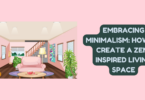
Conversion Marketing Strategies
If you know what Digital Marketing is, you have surely heard of the term “conversion” because for Digital Marketing specialists conversions are of great importance for every line of business.
But what do the conversions mean?
A conversion in Marketing refers to when a user who visits our website performs an action that we want him to perform or complete the desired objective.
In that case, they convert from visitors to potential customers or directly to customers if they make a purchase.
To better understand it, a conversion happens when a user goes from being a passive visitor to becoming an active visitor interested in our brand.
What can you count for conversions?
As we stated earlier, a conversion is the achievement of desired goals and can be applied to any valuable action a person takes on your website. Since there is a wide variety of value stocks, conversions can be several things.
- Sales
- Guides
- Email logs
- Form completions
- Record
- Subscription
- Visits to a key page
- Phone calls (or other direct contact)
It is not necessary to apply all these types of conversions at the same time and you are not limited to exclusively monitoring the conversions of this list, you can choose which actions are relevant to you.
Remember that anything that indicates customer interest or brings them one step closer in the buying cycle can be a conversion.
Why are conversions important to you?
Conversions are important because they make your business profitable.
Yes, the final conversion is indeed the sale, but the other conversions are also important as they help you determine who your potential customers are and convert them into customers through the use of the conversion funnel.
Keep in mind that just as conversions are important, it is also important to track conversions, because this way you can understand your customers and understand which tactics are working and which are not.
What are the most used conversion terms?
There are several key conversion terms that you use when paying for paid advertising or net conversion efforts.
Conversion rate
Conversion rate refers to the percentage of visitors who convert when they see an offer or call your action on your website.
Conversion rate optimization
Conversion rate optimization refers to optimizing your website so that more users are converting.
Cost per conversion
The term cost per conversion refers to advertising and refers to the cost of advertising by the number of conversions that are made through that ad.
Cost per conversion tries to measure how much you will have to pay for each conversion.
How to analyse a conversion?
The idea is to find out and analyse the return on investment of each of the channels that were used to generate the conversions. For this reason, a good way to analyse the conversion is to segment it by the sources of web traffic.
Web traffic sources
- Paid: Visitors come to your website through paid promotions.
- Organic search: Users visit your website through search results organically.
- Direct: Refers to when a user generates a visit by directly entering your URL in the browser.
- Social: These are the visitors who come to your website through social networks.
- Reference: These are the users who come to your page from third-party web pages.
- Email: When users arrive through email marketing campaigns.
What instruments to use to increase the conversion rate?
There are several tools that you can use to better analyse your conversions and even boost them.
Surveys on the website
This tool can be of great help to obtain qualitative comments in real-time from your visitors while they are on your website.
If you carry out a good survey at the right time, you will be able to obtain information about the operation of your website and the opinions of your visitors regarding their user experience and why not, of your products or services as well.
Heat maps
The heat maps or heat maps provide a visual representation of the interaction between your visitors and your website and therefore you will help uncover valuable information about their behavior.
Session recording
Another very helpful tool is the recordings of your users’ sessions as it also allows you to understand the browsing behavior by observing the interaction of your visitors.
In this way, you will be able to know which are the weakest points of your website that should be subject to improvement as well as discover which the parts that have the most strength are.
What other elements can prevent conversions?
A weak call to action
Make sure to continually test each element of your web page to ensure that they are propelling the user towards the call to action.
Also, make sure you have a clear and concise call to action.
Your website navigation
If your website does not have good navigation, it is useless to direct so much traffic to your website because they will flee from it.
To improve navigation on your website you should try to order it as much as possible and draw the attention of users to the most important elements. Also, try to keep a minimalist design so that everything looks neat and understandable.
The loading time of your page
The loading time of your website is important because people are usually very impatient and if they have to wait a long time to see your site they will probably end up leaving.
Remember that conversions and the data that is analyzed for them serve to better market your company and obtain good final results concerning it.






